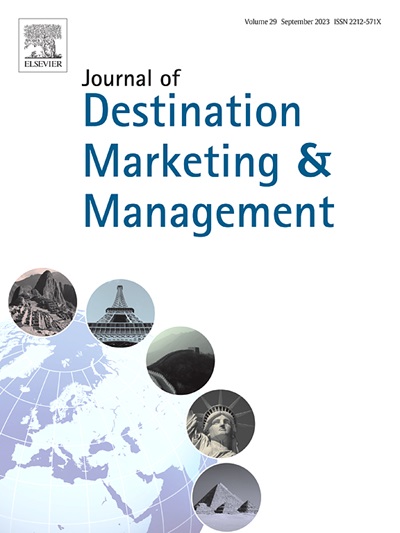Linking landscape features of urban parks to visitors' sense of place: A novel hybrid machine learning approach
IF 7.4
2区 管理学
Q1 HOSPITALITY, LEISURE, SPORT & TOURISM
引用次数: 0
Abstract
Sense of place is an essential aspect that enhances people’s willingness to revisit, satisfaction and loyalty. Many scholars have conducted research on people's sense of place in public open spaces. However, limited attention has been given to the comprehensive exploration of the physical environmental factors that these studies suggest affect the sense of place. Moreover, the limitations of existing traditional methods and big data approaches remain unresolved. This study aims to investigate the relationship between the physical environmental factors and tourists' sense of place, drawing on dual-function parks in Shanghai as an empirical case study. Natural language processing (NLP) and grounded theory techniques were used to establish a framework for a corresponding sense of place and its associated environmental factors in urban parks via online reviews, and word banks were created to quantify the sense of place. Regression analysis was used to determine the relationship between the sense of place, positive sentiments and environmental factors. The results showed that there was a significant relationship between the positive sentiments of park visitors and many elements of the sense of place. Among environmental factors, 12 factors were found to significantly influence the strength of sense of place. This study contributes to expanding the conceptual framework of sense of place and introducing a new approach to investigate the relationship between environmental factors and tourists' sense of place, and proposing implications for park planning and design.
将城市公园的景观特征与游客的场所感联系起来:一种新的混合机器学习方法
地方感是提高人们回访意愿、满意度和忠诚度的重要方面。许多学者对人们在公共开放空间中的场所感进行了研究。然而,对这些研究表明影响场所感的物理环境因素的综合探索受到了有限的关注。此外,现有传统方法和大数据方法的局限性仍未得到解决。本研究以上海双功能公园为实证案例,探讨自然环境因素与游客场所感的关系。利用自然语言处理(NLP)和扎根理论技术,通过在线评价建立了城市公园相应的地方感及其相关环境因素的框架,并创建了词库来量化地方感。采用回归分析确定了地方感、积极情绪与环境因素之间的关系。结果表明,公园游客的积极情绪与场所感的许多要素之间存在显著的关系。在环境因素中,有12个因素对地方感的强度有显著影响。本研究扩充了地方感的概念框架,为研究环境因素与游客地方感之间的关系提供了一种新的方法,并为公园规划设计提供了启示。
本文章由计算机程序翻译,如有差异,请以英文原文为准。
求助全文
约1分钟内获得全文
求助全文
来源期刊
CiteScore
18.60
自引率
3.60%
发文量
46
审稿时长
43 days
期刊介绍:
The Journal of Destination Marketing & Management (JDMM) is an international journal that focuses on the study of tourist destinations, specifically their marketing and management. It aims to provide a critical understanding of all aspects of destination marketing and management, considering their unique contexts in terms of policy, planning, economics, geography, and history. The journal seeks to develop a strong theoretical foundation in this field by incorporating knowledge from various disciplinary approaches. Additionally, JDMM aims to promote critical thinking and innovation in destination marketing and management, expand the boundaries of knowledge, and serve as a platform for international idea exchange.

 求助内容:
求助内容: 应助结果提醒方式:
应助结果提醒方式:


